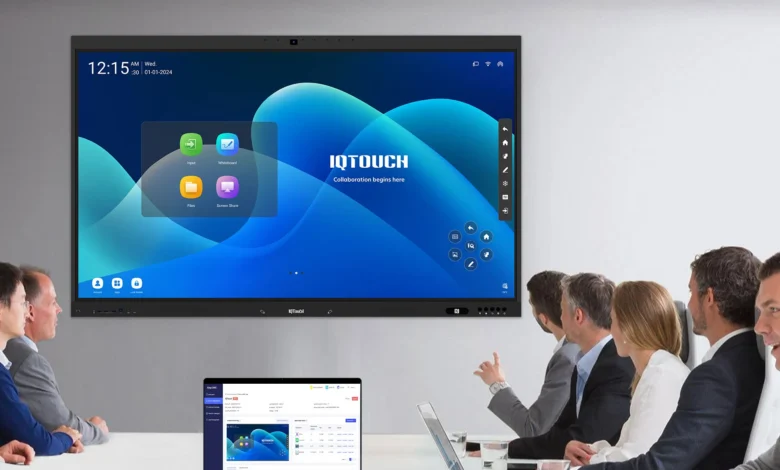Interactive Flat Panel Display: Revolutionizing Modern Education and Business

Introduction
In recent years, the integration of technology in various sectors has reshaped the way we communicate, learn, and conduct business. Among the most significant advancements is the interactive flat panel display (IFPD), a versatile device that combines the functionalities of a whiteboard, projector, and touchscreen into one cohesive system. IFPDs have transformed classrooms, meeting rooms, and collaborative spaces, offering dynamic and engaging experiences for users. This article explores the features, benefits, applications, and future trends of interactive flat panel display.
Understanding Interactive Flat Panel Displays
What is an Interactive Flat Panel Display?
An interactive flat panel display is a digital screen that allows users to interact with content through touch or stylus input. These displays typically feature high-definition screens that provide vibrant visuals, combined with advanced technology such as multi-touch capabilities and interactive software. IFPDs are designed to facilitate collaboration and engagement, making them ideal for educational and corporate environments.
Key Components of IFPDs
- Display Technology: IFPDs often utilize LED or LCD technology to provide clear and sharp images. The resolution can range from Full HD (1920 x 1080) to 4K (3840 x 2160), ensuring high-quality visuals.
- Touch Sensitivity: Most IFPDs offer multi-touch capabilities, allowing multiple users to interact with the display simultaneously. This feature enhances collaboration and interactivity during presentations or classroom activities.
- Software Integration: IFPDs come equipped with software that allows for a variety of applications, including note-taking, video conferencing, and educational tools. This software can often be customized to suit the specific needs of users.
- Connectivity Options: IFPDs typically support multiple connectivity options, including HDMI, USB, and wireless capabilities, enabling seamless integration with laptops, tablets, and smartphones.
- Built-in Speakers: Many IFPDs include integrated audio systems, enhancing the multimedia experience by allowing users to deliver presentations with sound directly from the display.
Benefits of Interactive Flat Panel Displays
The adoption of IFPDs offers numerous advantages across different sectors:
Enhanced Engagement
Interactive flat panel displays promote active participation and engagement. In educational settings, teachers can incorporate interactive lessons that captivate students’ attention and encourage collaboration. In business environments, IFPDs facilitate dynamic brainstorming sessions and discussions, leading to more innovative ideas.
Improved Collaboration
IFPDs enable seamless collaboration among team members, regardless of their physical location. Features like screen mirroring and video conferencing allow for real-time sharing of information and ideas, making it easier for remote teams to work together effectively.
Versatility
The versatility of IFPDs makes them suitable for various applications. Whether used for presentations, training sessions, or interactive lessons, these displays can adapt to different environments and user needs. They can be utilized in classrooms, conference rooms, training centers, and even healthcare facilities.
Cost-Effectiveness
While the initial investment in IFPDs may be higher than traditional teaching or presentation tools, the long-term benefits often outweigh the costs. By consolidating multiple functionalities into one device, organizations can reduce expenses related to maintenance, training, and equipment purchases.
Environmentally Friendly
Interactive flat panel displays are often considered more environmentally friendly than traditional projectors and whiteboards. With no need for paper or physical materials, IFPDs contribute to reducing waste in classrooms and offices.
Applications of Interactive Flat Panel Displays
The versatility of interactive flat panel displays has led to their widespread adoption across various sectors. Here are some key applications:
Education
1. Classroom Learning
In classrooms, IFPDs serve as the centerpiece for interactive lessons. Teachers can present multimedia content, conduct live polls, and facilitate group discussions using the touch interface. This engagement helps students retain information better and encourages collaborative learning.
2. Distance Learning
With the rise of online education, IFPDs play a crucial role in distance learning. They support video conferencing tools and collaborative platforms, allowing teachers to engage with students remotely and create interactive learning experiences.
3. Training and Development
Educational institutions can utilize IFPDs for professional development and training sessions. Instructors can create interactive modules that enhance skill development and knowledge retention.
Business
1. Corporate Meetings
In corporate settings, IFPDs are ideal for presentations and meetings. They allow teams to share data and ideas visually, encouraging participation and feedback from all attendees. The ability to annotate and save changes directly on the display enhances the collaborative process.
2. Brainstorming Sessions
IFPDs facilitate brainstorming and ideation sessions by providing a platform for teams to visualize their thoughts and concepts. This interactive approach leads to more productive discussions and innovative solutions.
3. Sales Presentations
Sales teams can leverage IFPDs to deliver impactful presentations to clients. The high-resolution displays and interactive features enable sales representatives to showcase products effectively, making a lasting impression.
Healthcare
Interactive flat panel displays have also found applications in the healthcare sector. They can be used for:
1. Patient Education
Healthcare professionals can use IFPDs to educate patients about medical procedures and conditions. Interactive visuals can help explain complex information in a more understandable way, improving patient comprehension.
2. Collaborative Treatment Planning
Medical teams can utilize IFPDs during collaborative treatment planning sessions. The ability to share and annotate patient data in real-time enhances communication among healthcare providers, leading to better patient outcomes.
Choosing the Right Interactive Flat Panel Display
When selecting an interactive flat panel display, several factors should be considered:
1. Size and Resolution
The size and resolution of the display are crucial for effective engagement. Larger displays are better suited for larger rooms or classrooms, while smaller displays may be more appropriate for smaller meeting rooms. Higher resolutions provide clearer images, which can enhance visibility.
2. Touch Technology
Different IFPDs utilize various touch technologies, including infrared, capacitive, or resistive touch. Capacitive touch technology is often preferred for its responsiveness and accuracy, allowing for a smoother user experience.
3. Connectivity Options
Ensure that the IFPD offers a range of connectivity options to accommodate different devices and platforms. Wireless connectivity is particularly valuable for promoting collaboration and flexibility.
4. Software Compatibility
Check the software compatibility of the IFPD with existing tools and applications used in your organization or institution. The ability to integrate with popular software can enhance the overall user experience.
5. Budget Considerations
While IFPDs can be a significant investment, it’s essential to consider the long-term benefits and savings they offer. Evaluate the total cost of ownership, including maintenance and upgrades, to make an informed decision.
Future Trends in Interactive Flat Panel Displays
As technology continues to evolve, interactive flat panel displays are likely to undergo significant advancements. Here are some future trends to watch:
1. Enhanced AI Integration
Artificial intelligence (AI) is expected to play a more significant role in IFPDs, enabling features like personalized learning experiences, smart content recommendations, and automated administrative tasks. AI-driven analytics can provide valuable insights into user engagement and performance.
2. Improved Collaboration Tools
Future IFPDs are likely to incorporate more advanced collaboration tools, allowing for seamless integration with various communication platforms. Features like virtual reality (VR) and augmented reality (AR) may also become more prevalent, offering immersive collaborative experiences.
3. Increased Portability
As remote work and flexible learning environments continue to rise, manufacturers may focus on creating more portable IFPDs. Lightweight designs with battery options could make it easier to transport displays between locations.
4. Greater Customization Options
Users will likely see more customizable IFPDs, allowing organizations to tailor the interface and functionalities to their specific needs. Custom software solutions can enhance the overall user experience and engagement.
5. Sustainability Initiatives
With growing awareness of environmental issues, manufacturers may prioritize sustainability in the production of IFPDs. This could include using eco-friendly materials, reducing energy consumption, and creating devices with longer lifespans.
Conclusion
Interactive flat panel display have emerged as a powerful tool for enhancing collaboration, engagement, and learning across various sectors. Their versatility, combined with the ability to provide dynamic and interactive experiences, makes them an invaluable asset in modern classrooms and businesses. As technology continues to advance, IFPDs will likely evolve to meet the changing needs of users, driving innovation and fostering a more collaborative future. Organizations and educational institutions that embrace this technology can expect improved outcomes, enhanced productivity, and a more engaged audience, positioning themselves at the forefront of the digital age.





